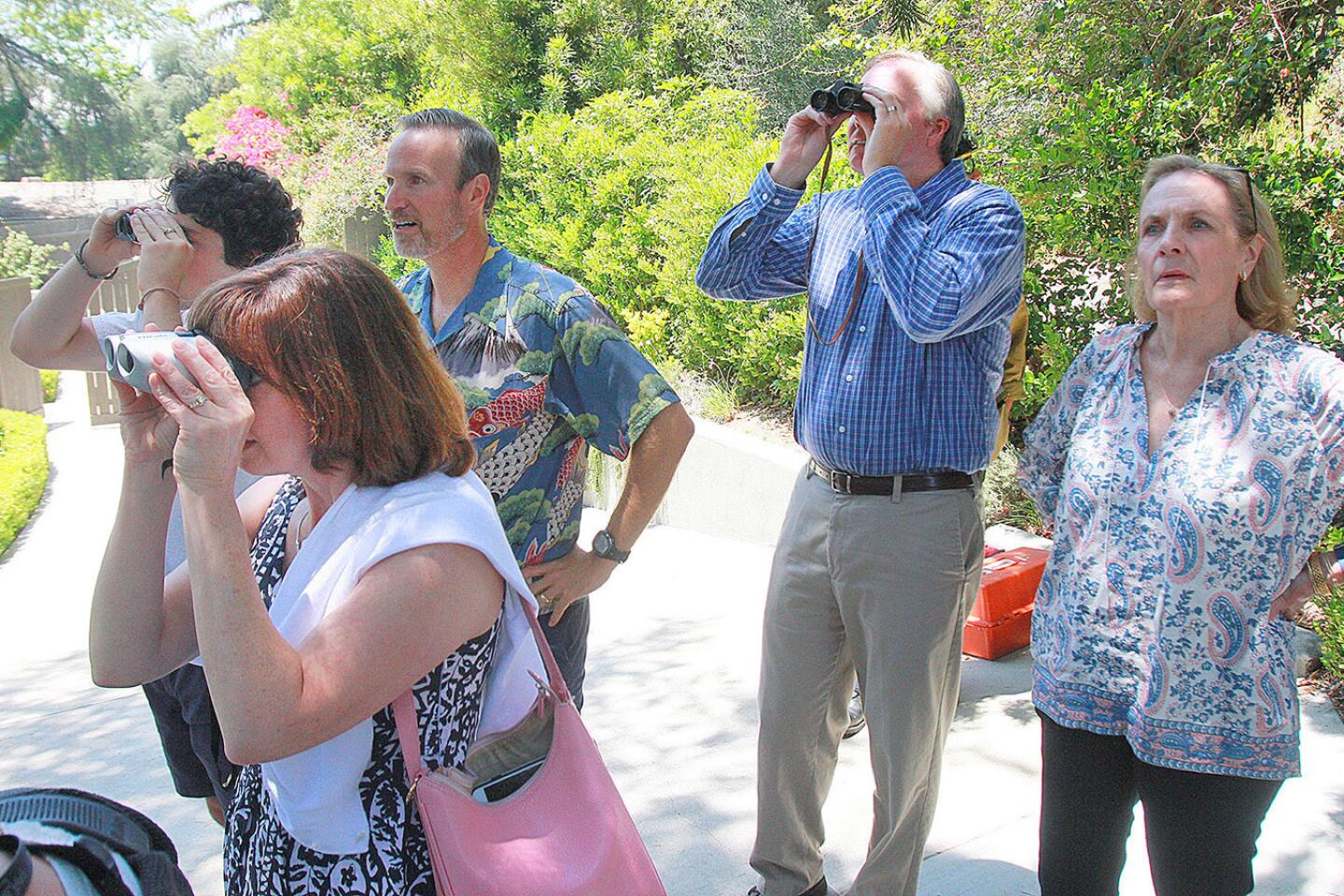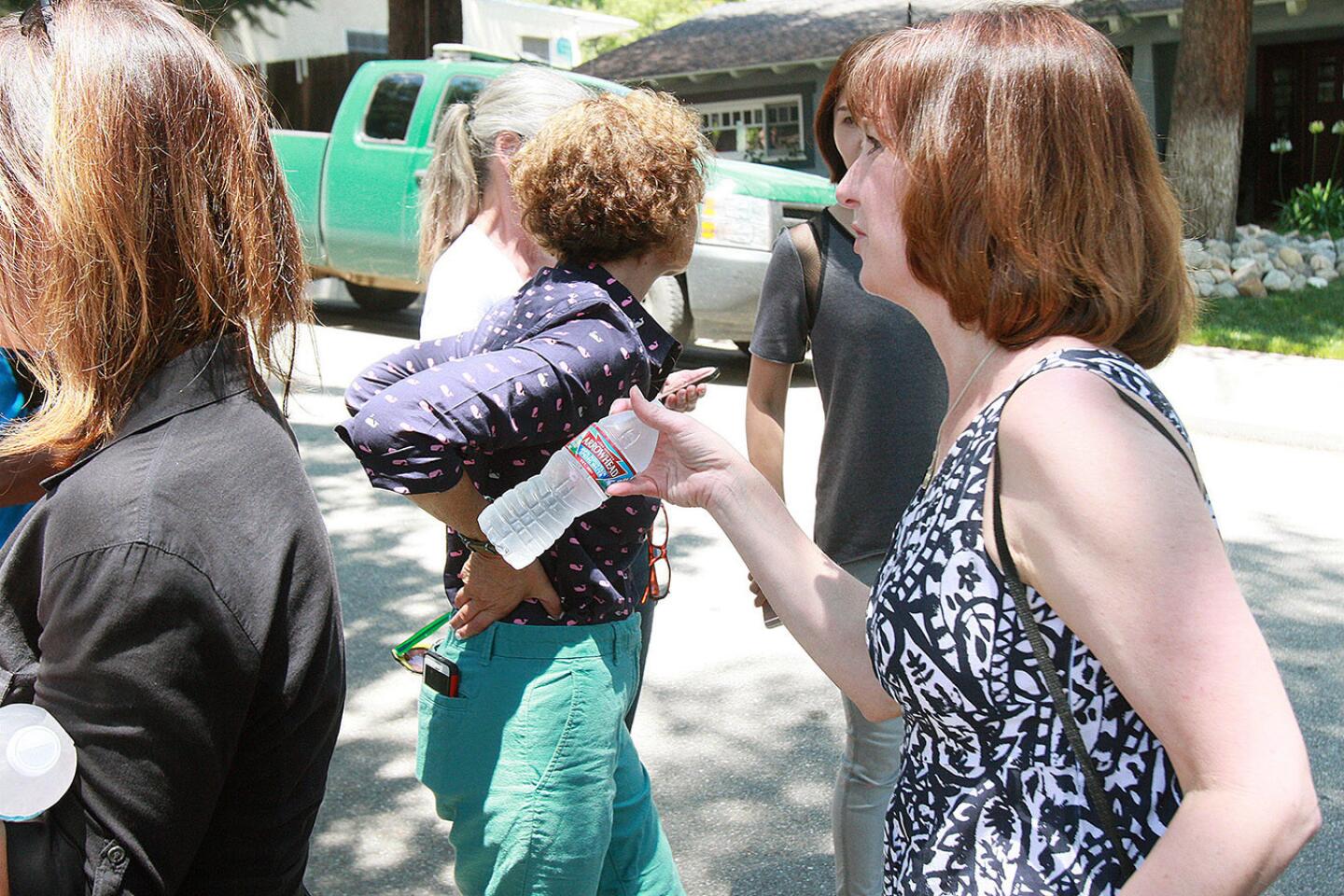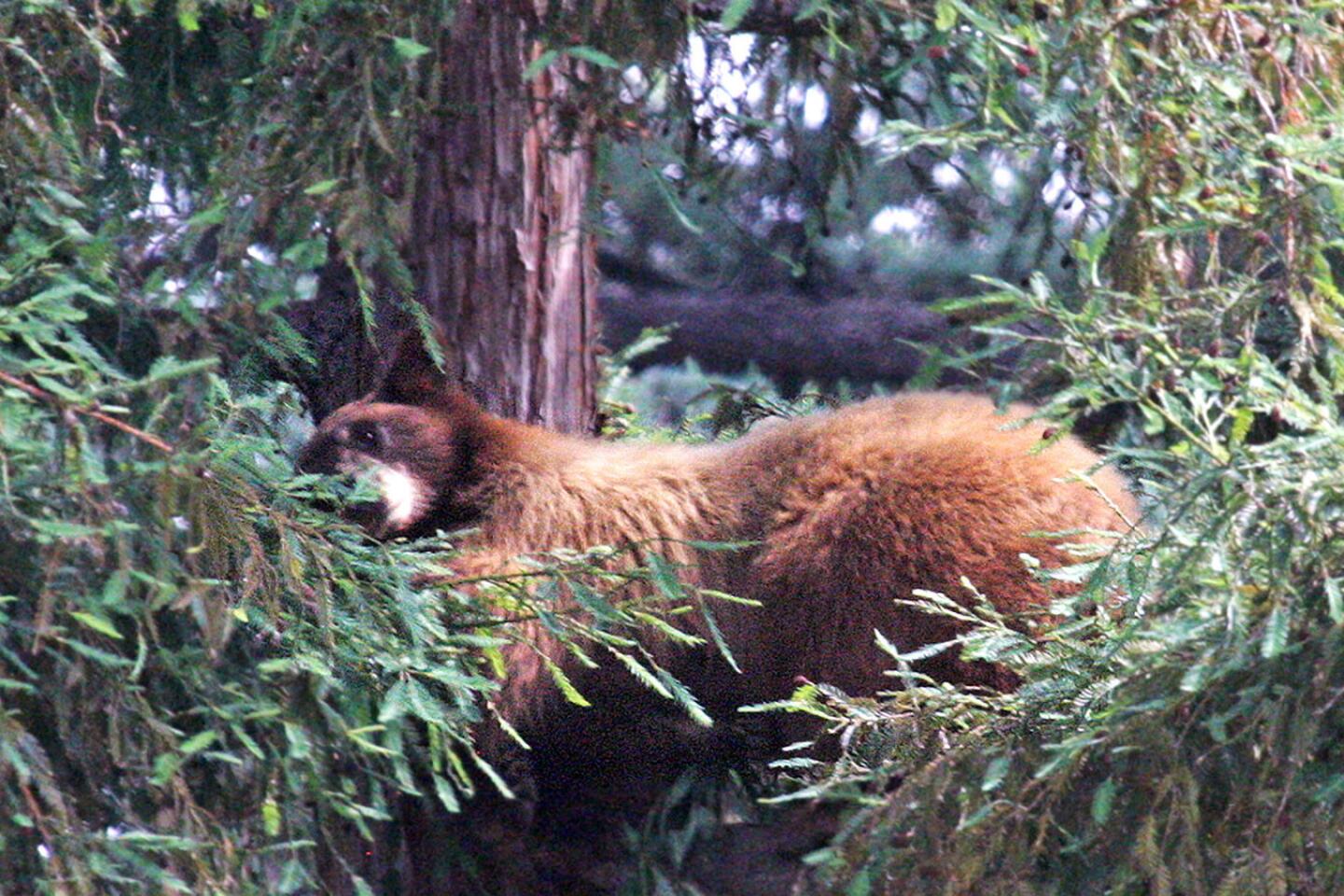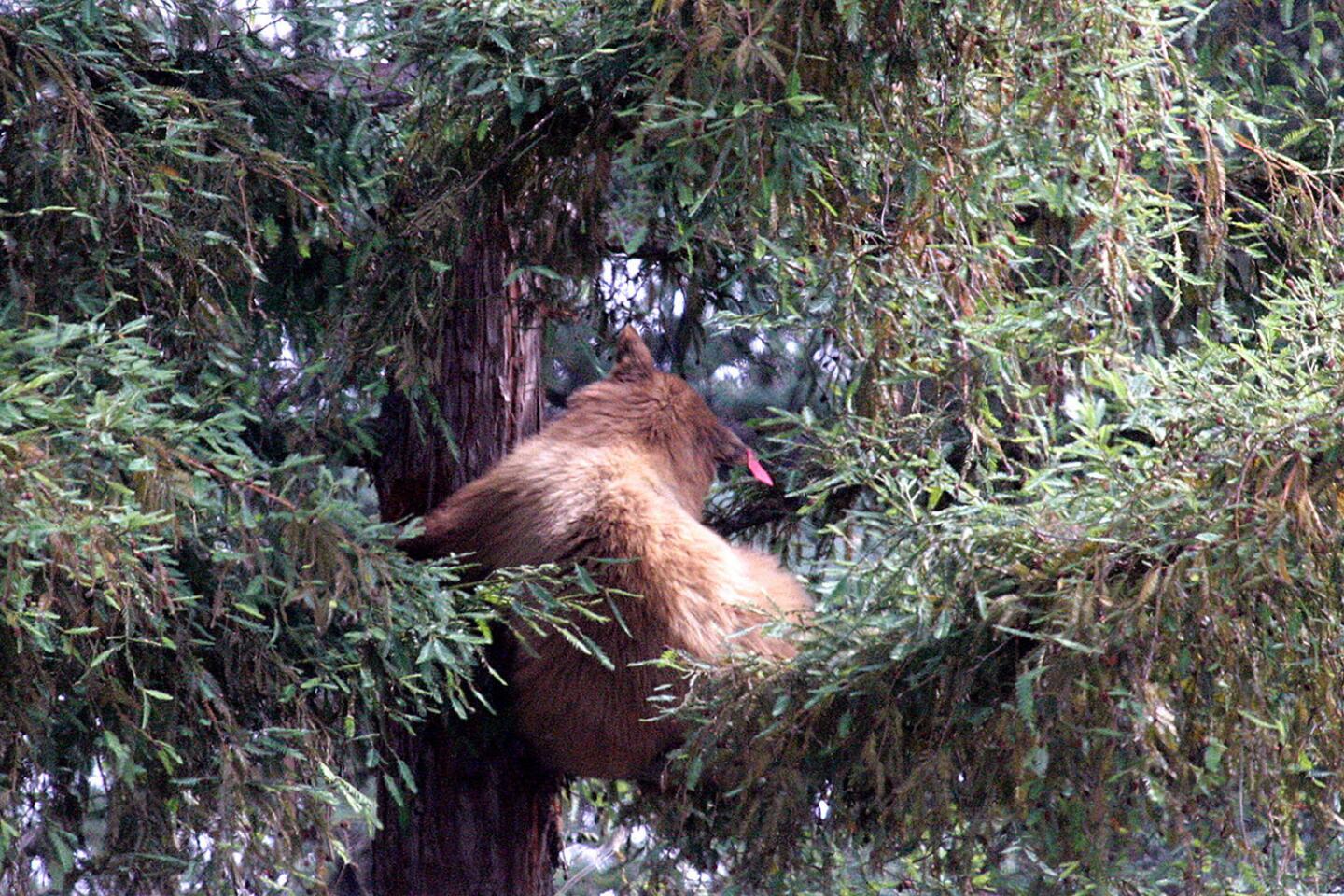Wildlife officials offer tips, try to dispels bear myths
Even as a female bear trekked through a Foothills neighborhood Monday evening, area homeowners convened in La Crescenta to learn more about what state wildlife officials insist is not a bear problem, but a people problem.
“If you live north of the 210 Freeway, you live in bear habitat,” said California Department of Fish and Wildlife spokesman Andrew Hughan, who came from Sacramento to talk to homeowners living near the wildland-urban interface.
The key to keeping bears alive and out of the human realm, he said, is educating residents about measures that will make properties less inviting than the wilderness that surrounds them.
Hughan was joined Monday by Department of Fish and Wildlife Patrol Lt. Marty Wall at St. Luke’s of the Mountains Episcopal Church on Foothill Boulevard to lead the informal discussion. There, participants learned about the agency’s response to bear sightings and tips for preventing potentially dangerous encounters.
“We’re here to dispel myths,” Wall said, clarifying that his department’s chief aim is not to kill animals, but to help them return to the wild.
One common misconception is that Southern California’s black bears are looking to harm people.
“They’re not predators, they’re opportunists just looking for their next meal,” Wall said. “They’re very attracted to people food and the things that we do.”
Untethered trash cans, unpicked fruit trees and swimming pools can look awfully inviting to the ursine sort on a hot summer day, Wall shared. Bears accustomed to dwelling among humans — such as “Red 2,” a lone female bear that’s been spotted in backyards from Pasadena to Burbank since June — may be emboldened to go a step further.
“Red 2 has just learned a new trick — hummingbird feeders,” Wall said. “They knock them to the ground and then eat the dirt that the sugar water went into.”
Such antics and videos shot of Red 2 cooling off in a La Cañada Flintridge pool may seem cute to many, but not to Mike and Carolyn Baldwin. Their Whiting Woods home has been a popular hangout for bears, most recently Red 2, who pried open a fence to access a side patio and was last seen Friday.
“We think [she’s] getting a little too territorial,” Carolyn Baldwin said.
The couple came out Monday to ask why the Department of Fish and Wildlife hasn’t done more to prevent such visits.
“What can we do to help you capture the bear and get it out of the area? Because someone’s going to get hurt,” Mike Baldwin pressed Hughan.
Hughan explained a bear’s presence doesn’t necessarily warrant a visit, as the agency’s first method of response is to wait for the creatures to retreat back to the woods. Tranquilizer guns may not work in time, and relocated bears often make their way back to a favorite trash can or pool, so encouraging them toward non-lethal traps and educating residents are the best bets for preventing future house calls.
Wall said he gets an alert on his phone every time the Glendale Police Department receives a report of a bear sighting, so he can track them. During the meeting, he got notice of a female bear near Glendale’s El Lado Drive.
Residents can make their homes unattractive to bears by harvesting fruit from trees, securing trash cans or waiting until morning to bring them out and not leaving out water or food for pets. Repellents, like household ammonia sprinkled on the ground or trash is an immediate turnoff because it signifies decay.
La Crescenta resident Kim Mattersteig has become a bit of an advocate on the matter since her Jack Russell terrier, Bridgette, was killed by a mountain lion in 2013. She said she organized Monday’s meeting to help keep neighbors informed so they’ll protect their homes and take warnings about wildlife seriously.
“You think it will never happen to you — until it does,” Mattersteig said.









